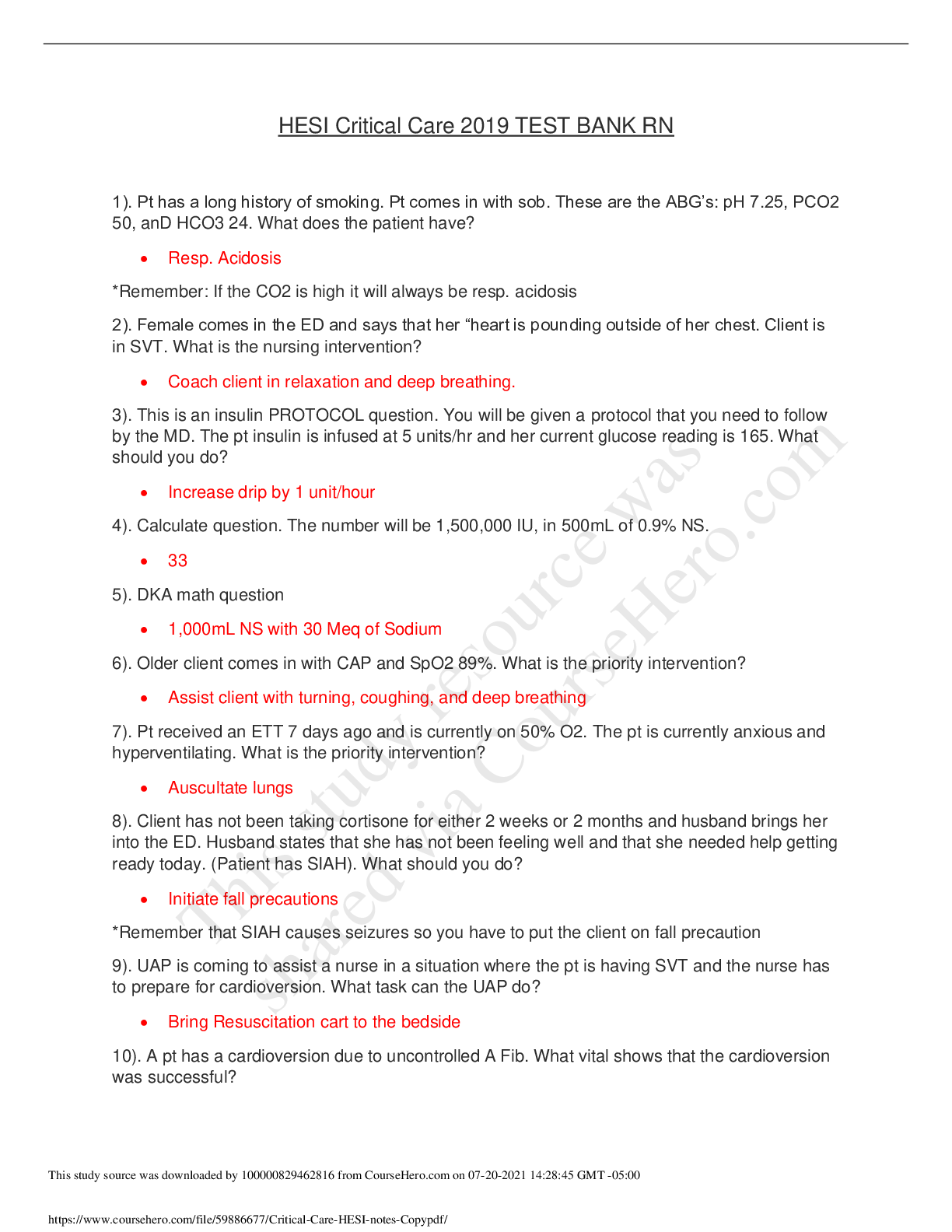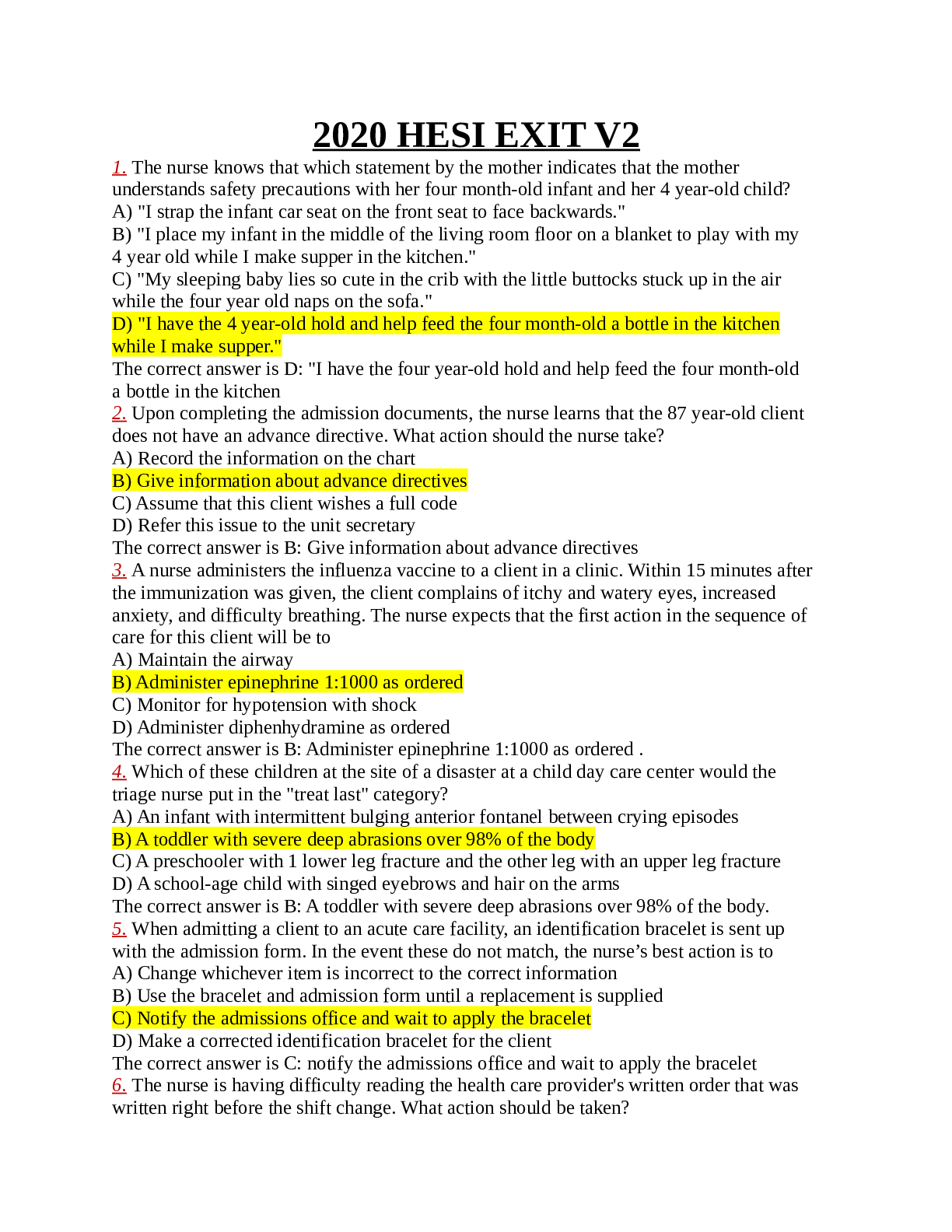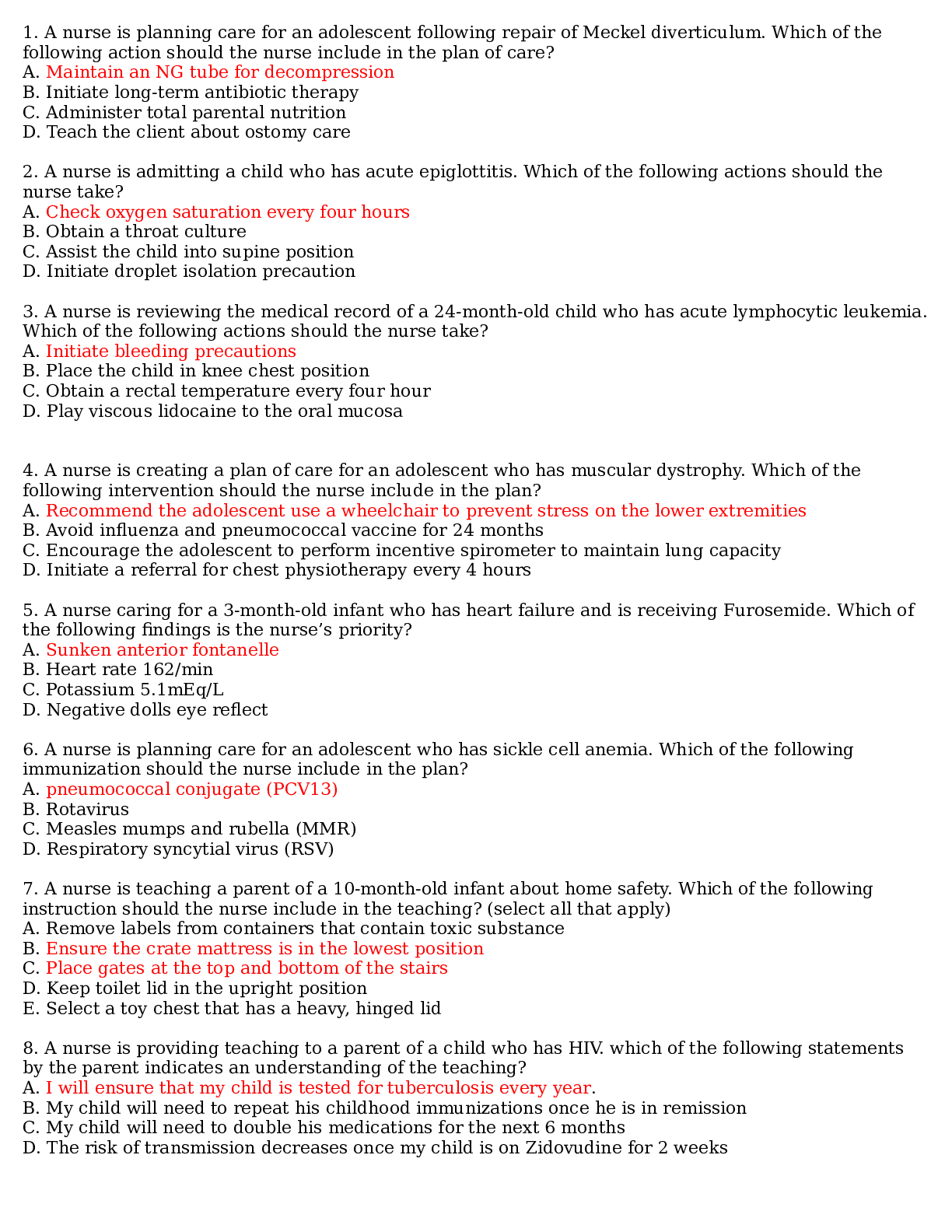Hesi A&P Study Guide 2021-2022. Latest exam review questions and answers.
Document Content and Description Below
Hesi A&P Study Guide 2021-2022. Latest exam review questions and answers. The structural makeup of an organism - Anatomy The study of anatomy concerned with microscopic features of the body - Fine ... Anatomy The study of anatomy concerned with the features of the body visible without a microscope. - Gross Anatomy Refers to the functions of an organism, and it examines the chemical or physical functions that help the body fuction appropriately. - Physiology All parts of the human body are build of individual units called: - Cells Groups of similar cells are arranged into: - Tissues Different tissues are arranged into: - Organs Organs working togther form: - Organ Systems The human body has twelve organ systems that govern: - Circulation, digestion, immunity, hormones, movement, support, coordination, urination, excretion, reproduction, respiration, and general protection. Body Cavities - Different hollow spaces that house organs in the body. Cranial Cavity - The cranial cavity is surrounded by the skull and contains organs such as the brain and pituitary gland.Thoracic Cavity - The thoracic cavity is encircled by the sternum (breastbone) and ribs. It contains organs such as the brain and pituitary gland. Abdominal Cavity - The abdominal cavity is separated from the thoracic cavity by the diaphragm. It contains organs such as the stomach, gallbladder, liver, small intestines, and large intestines. The abdominal organs are held in place by a membrane called the peritoneum. Pelvic Cavity - The pelvic cavity is enclosed by the pelvis, or bones of the hip. It contains organs such as the urinary bladder, urethra, ureters, anus, and rectum. It contains the reproductive organs as well. In females, the pelvic cavity also contains the uterus. Spinal Cavity - The spinal cavity is surrounded by the vertebral column. The vertebral column has five regions: cervical, thoracic, lumbar, sacral, and coccygeal. The spinal cord runs through the middle of the spinal cavity. The three primary planes of the human body are: - frontal, saggital, and transverse. Frontal/Coronal plane: - a vertical plane that divides the body or an organ into a front (anterior) and back (posterior) portions. Saggital/Lateral plane: - a vertical plane that divides the body into right and left parts Transverse plane: - a horizontal plane that divides the body into superior (upper) and inferior (lower) portions Anatomic Position: - The body and head are straight up and, the feet are close but not touching, and the hands are pointed forward. Medial - Refers to a structure being closer to the midline of the body. For example, the nose is medial to the eyes. Lateral: - Refers to a structure being farther from the midline of the body, and is the opposite of medial. For example, the eyes are lateral to the nose.Proximal: - Refers to a structure or body part located near an attachment point. For example, the elbow is proximal to the wrist. Distal - Refers to a structure or body part located far from an attachment point. For example, the wrist is distal to the elbow. Anterior: - Means toward the front. For example, the lips are anterior to the teeth. Posterior: - Means toward the back, and is the opposite of anterior. For example, the teeth are posterior to the lips. Superior: - Means above and refers to a structure close to the head. For example, the head is superior to the neck. The terms cephalic or cranial may be used in place of superior. Inferior: - Means below and refers to a structure farther from the head, and is opposite of superior. For example, the neck is inferior to the head. The term caudal may be used in place of inferior. Superficial: - Refers to a structure being closer to the surface of the body. For example, the muscles are superficial because they are just beneath the surface of the skin Deep: - Refers to a structure farther from the surface, and it is the opposite of superficial. For example, the femur is a deep structure lying beneath the muscles. Cervical: - relating to the neck Clavicular: - pertaining to the clavicle or collarbone Ocular: - Relating to the eyes Acromial: - relating to the shoulderCubital - relating to the elbow Brachial - relating to the arm Carpal - relating to the wrist Thoracic - relating to the chest or thorax Abdominal - relating to the abdomen Pubic - relating to the groin Pelvic - relating to the pelvis, or bones of the hip Femoral - Relating to the femur, or thigh bone Geniculate - relating to the knee Pedal - Relating to the foot Palmar - Relating to the palm of the hand Plantar - relating to the sole of the foot Abdominopelvic region - The combination of the abdominal and pelvic cavities. This region is divided into nine sections. right hypochondriac region - region below the cartilage of the ribsEpigastric region - the region above the stomach between the hypochondriac regions. left hypochondriac region - region below the cartilage of the ribs Right lumbar - region of the waist Umbilical - the region between the lumbar regions where the umbilicus or navel is located. Left lumbar - region of the waist Right inguinal - region of the groin Hypogastric - the region below the stomach between the inguinal regions. Left inguinal - the region of the groin Abdominopelvic Area - Is divided into four quadrants Right Upper Quadrant (RUQ) - Encompasses the right hypochondriac, right lumbar, epigastric, and umbilical regions. Right Lower Quadrant (RLQ) - Encompasses the right lumbar, right inguinal, hypogastric, and umbilical regions. Left Upper Quadrant (LUQ) - Encompasses the left hypochondriac, left lumbar, epigastric, and umbilical regions. Left Lower Quadrant (LLQ) - Encompasses the left lumbar, left inguinal, hypogastric, and umbilical regions.Cytology - The study of cells. Histology - The study of cells and tissues in living organisms. Cells must contain a: - Cell membrane, cytoplasm, and genetic information. The cell membrane forms: - A barrier between the inside and the outside of the cell, envelops the cellular contents, and interfaces with the extracellular fluid through proteins and other structures found through proteins and other structures found in or on the cell membrane. Eukaryotic Cells - Those found in plants, animals, and fungi. Possess functional units called organelles. Organelle: - A tiny cell structure that carries out a specific function within the cell Nuclues - Control center of the cell, contains DNA Rough ER - Has ribosomes attached, assembles enzymes and proteins. Smooth ER - Lacks ribosomes and creates and stores lipids. Golgi apparatus - Contains many enzymes, and these enzymes allow it to process incoming proteins and package them into small membranous sacs called vesicles for transport into and out of the cell. Mitochondria - An organelle found in large numbers in most cells, in which the biochemical processes of respiration and energy production occur. Cytoskeleton - A collection of protein filaments; it provides a lattice for intracellular transport and helps maintain the cell's shape/Cytosol - The fluid inside the cell and membrane-bound organelles. Vesciles - Transport material in or out of the cell. Vacuoles - Large amorphous cell compartments, mostly found in plants and fungi, that store fluid, proteins, and other materials, and maintain the cell's rigidity. Cilia and Flagella - Move fluids past the cell's surface or help with mobility. The Cell Cycle - The process by which a cell divides and duplicates itself. [Show More]
Last updated: 1 year ago
Preview 1 out of 26 pages
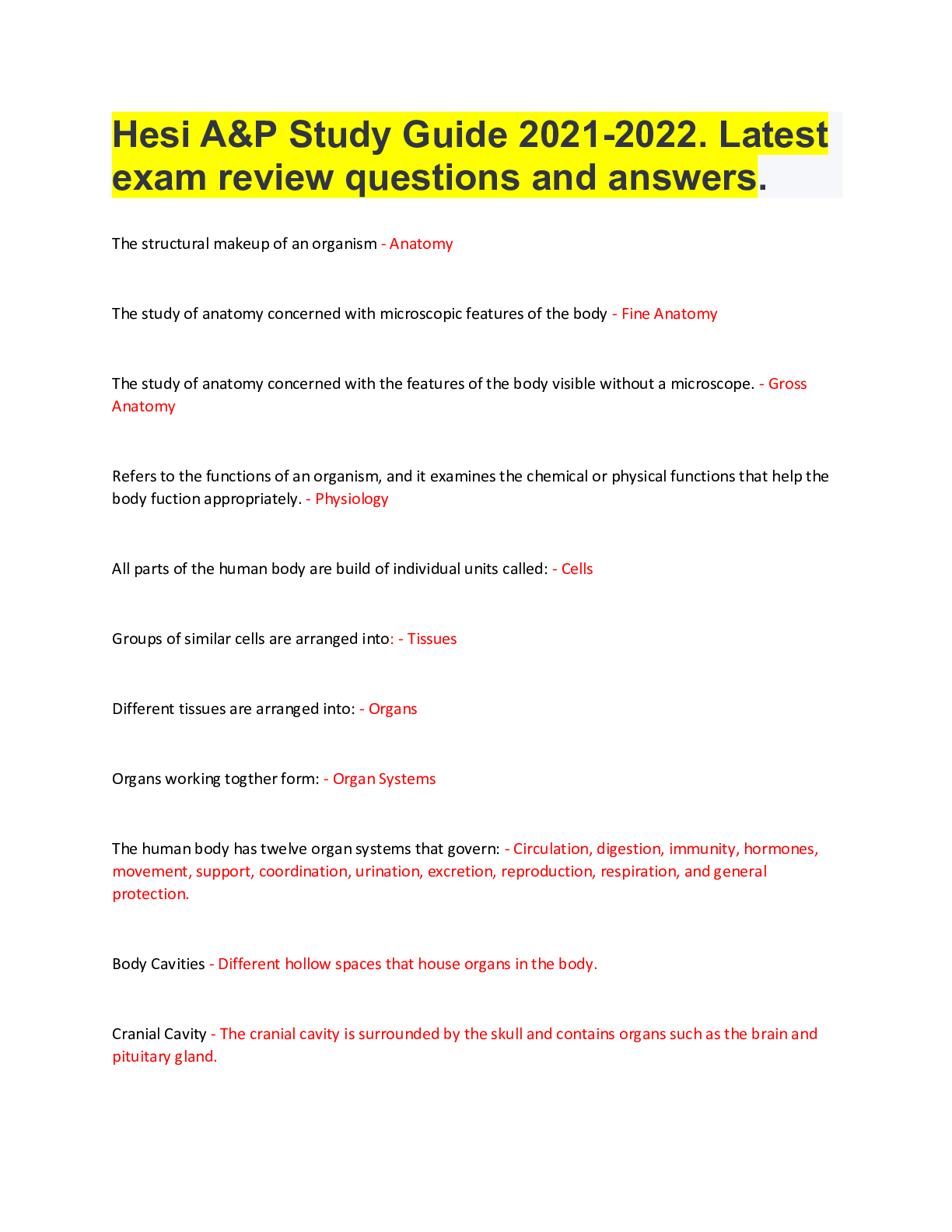
Reviews( 0 )
Document information
Connected school, study & course
About the document
Uploaded On
May 17, 2022
Number of pages
26
Written in
Additional information
This document has been written for:
Uploaded
May 17, 2022
Downloads
0
Views
315



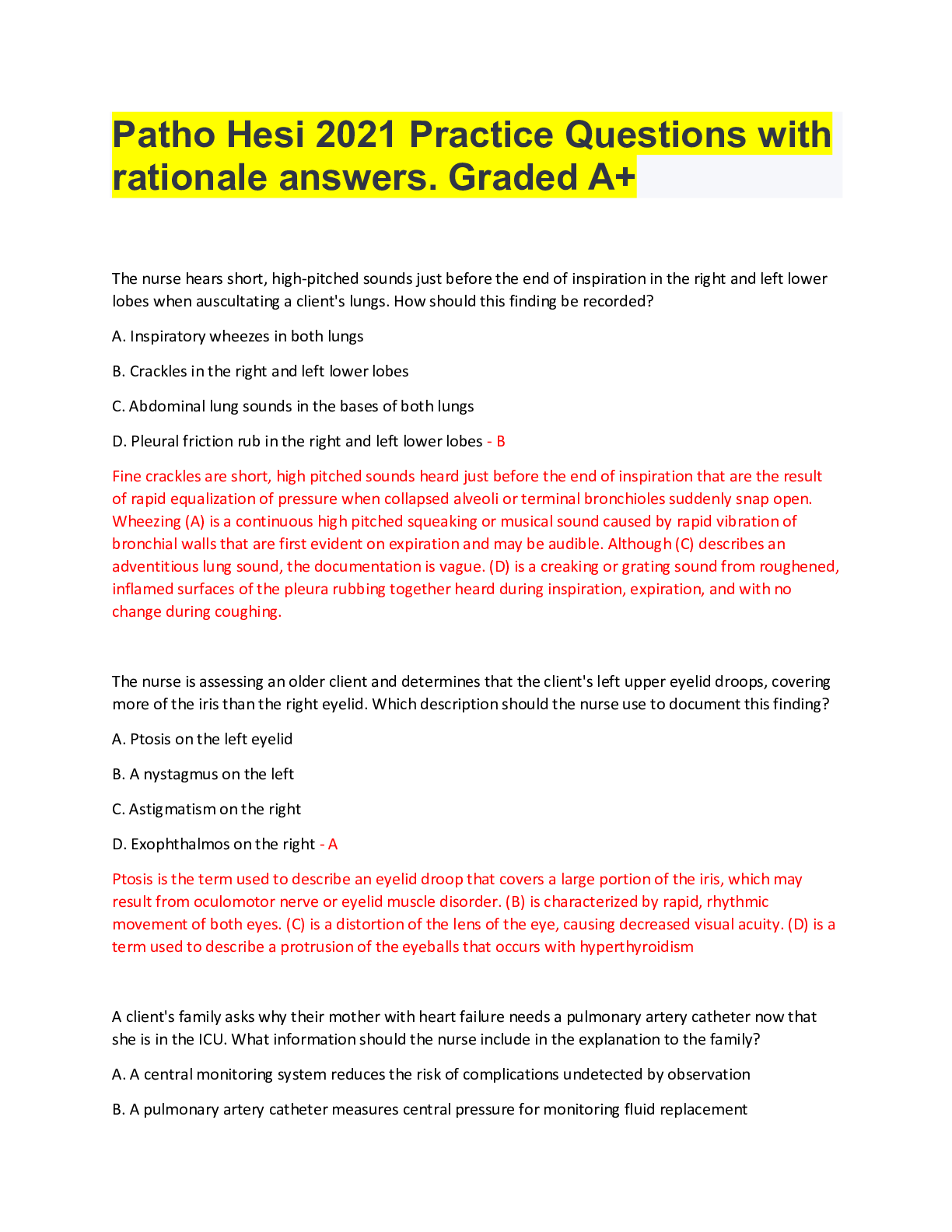
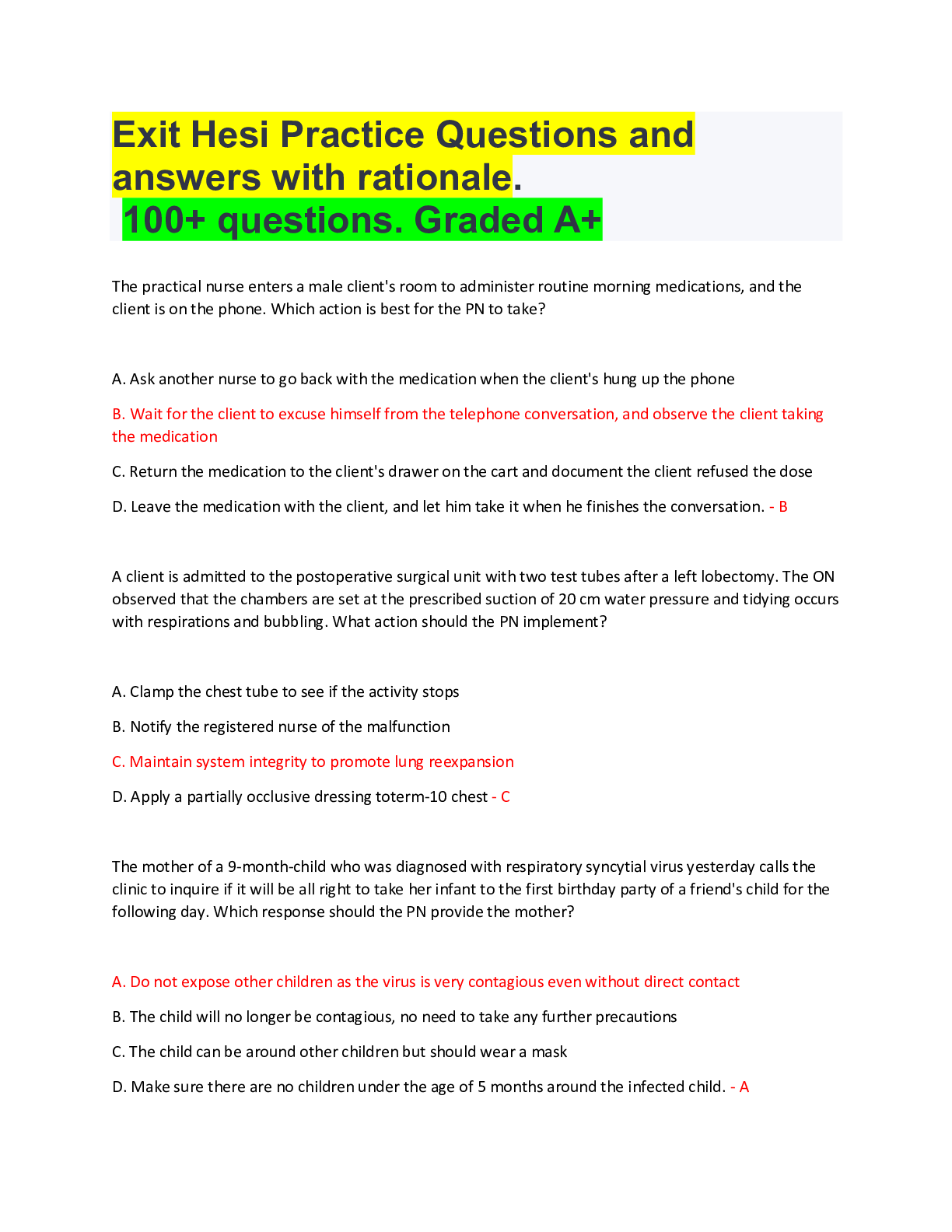

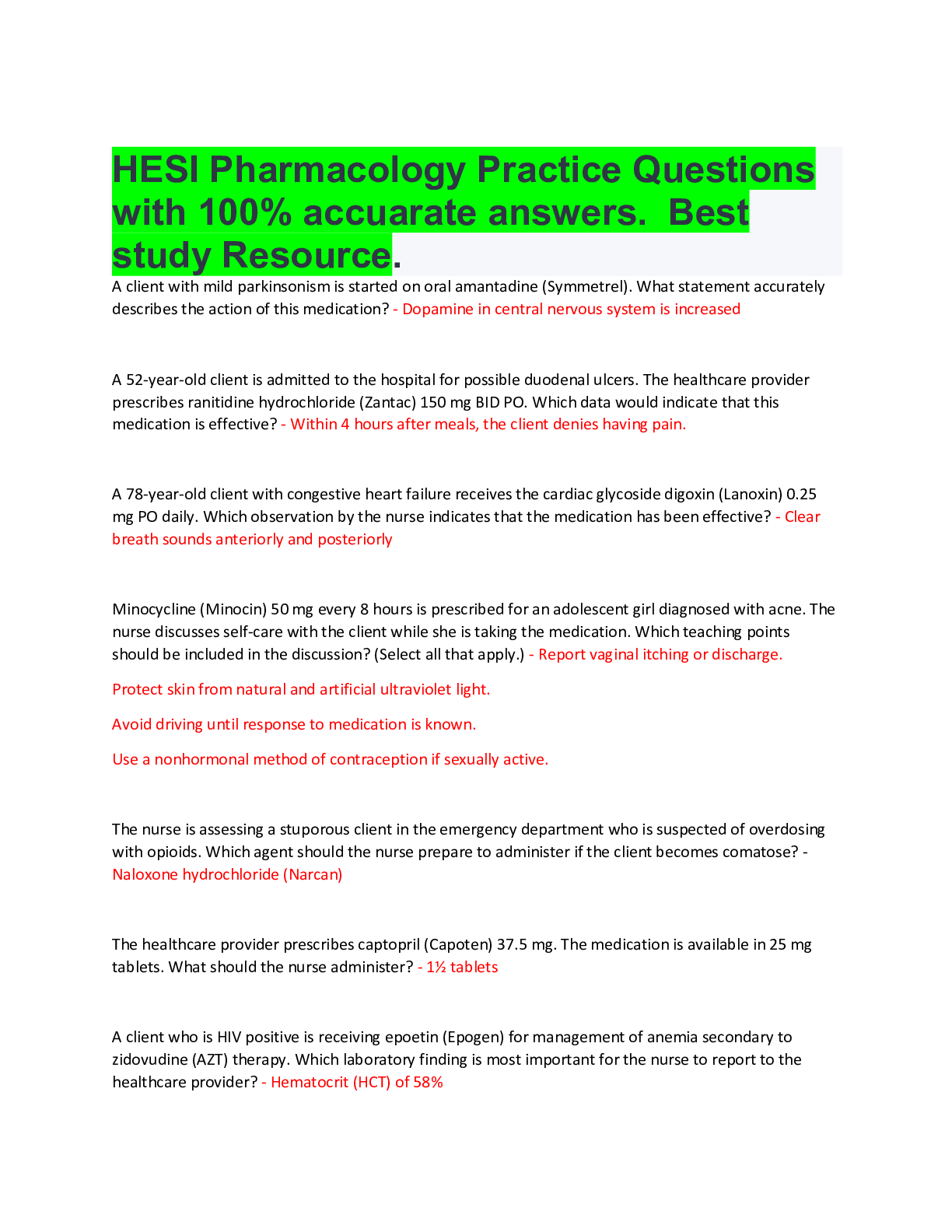


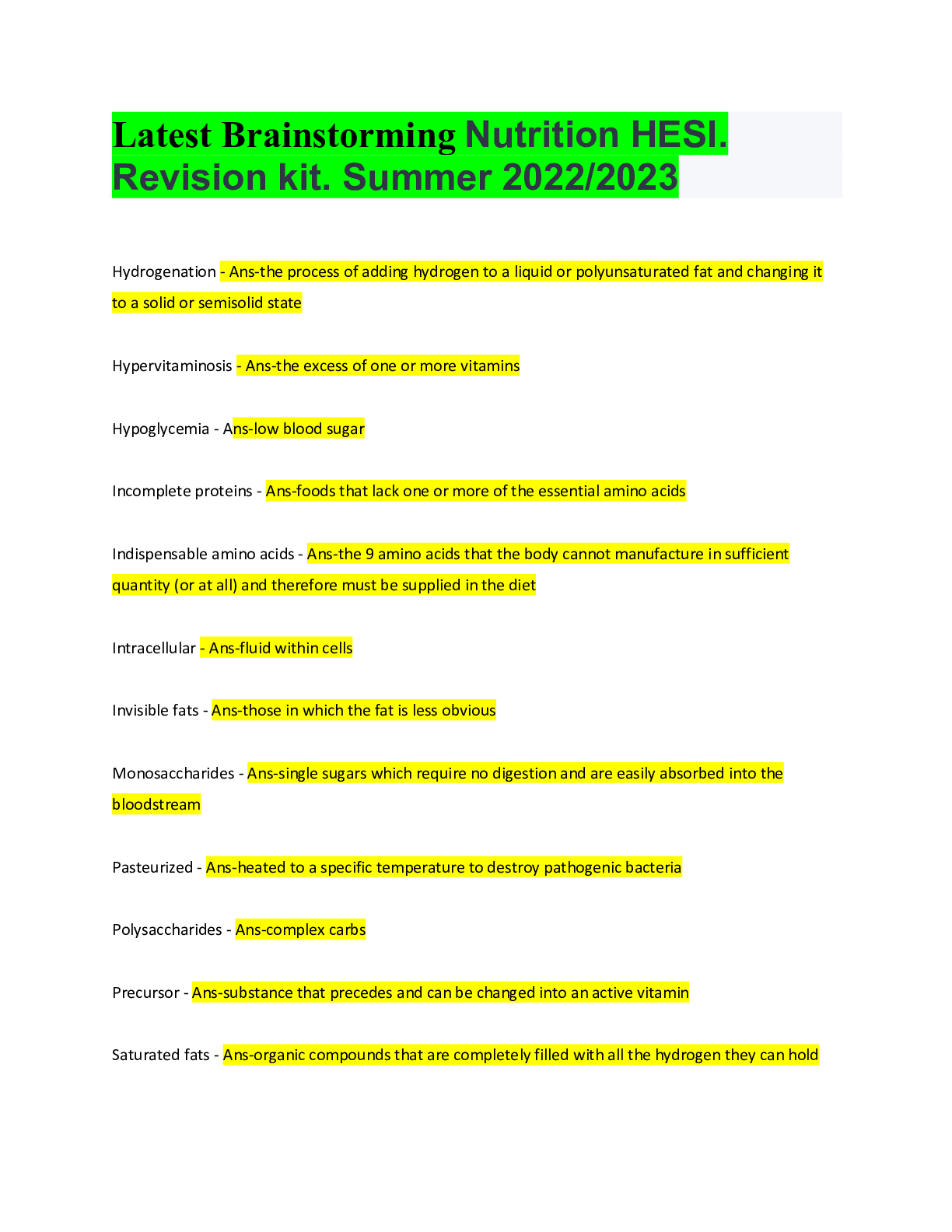
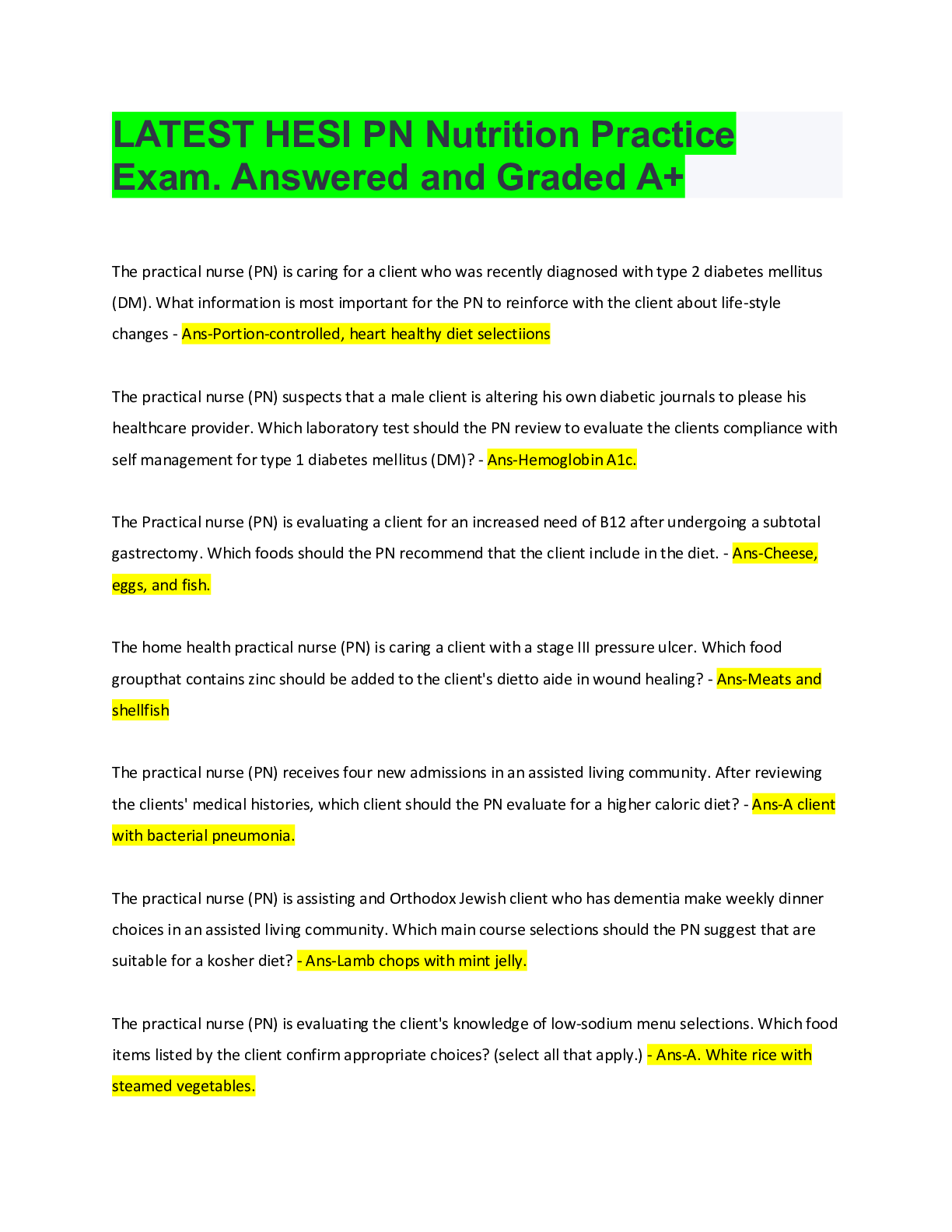
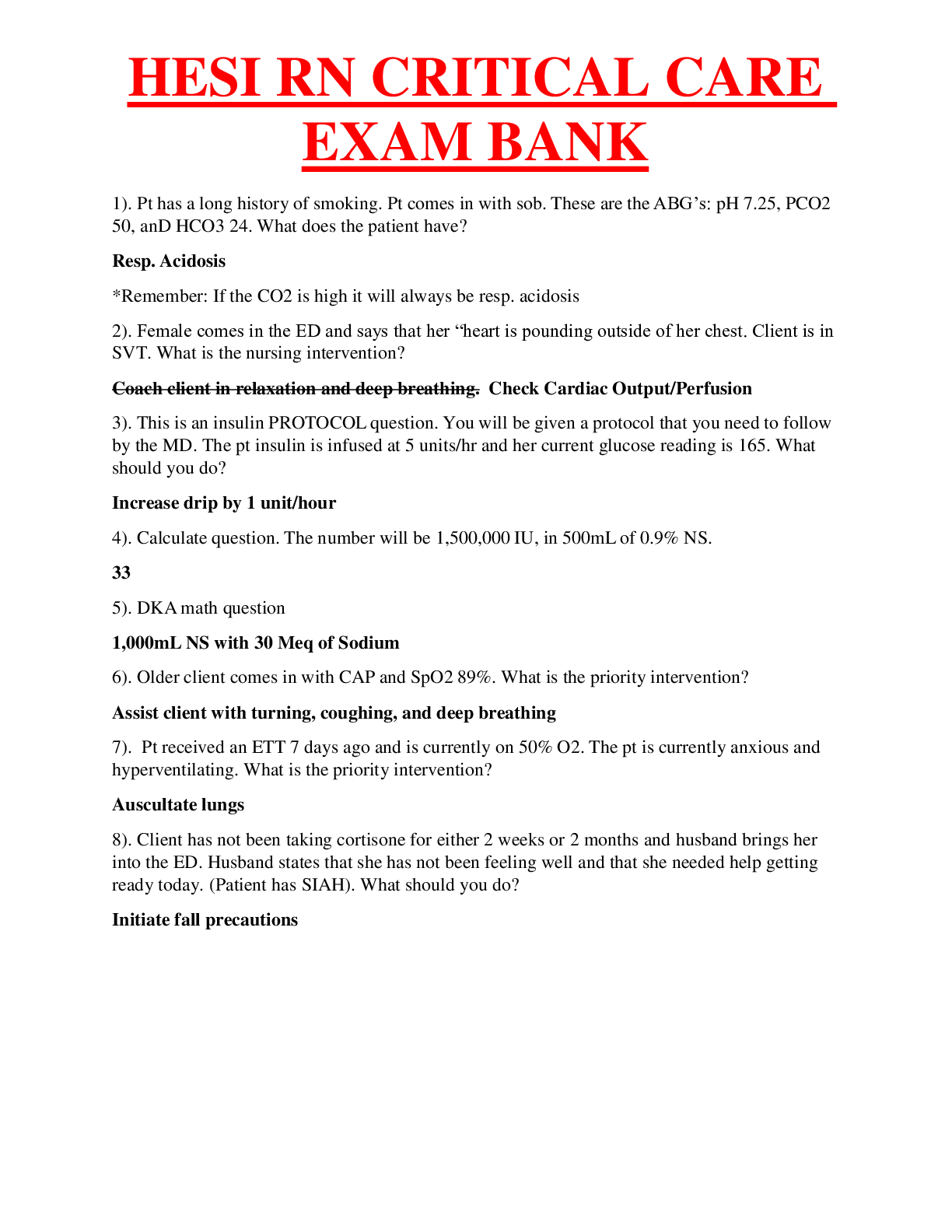

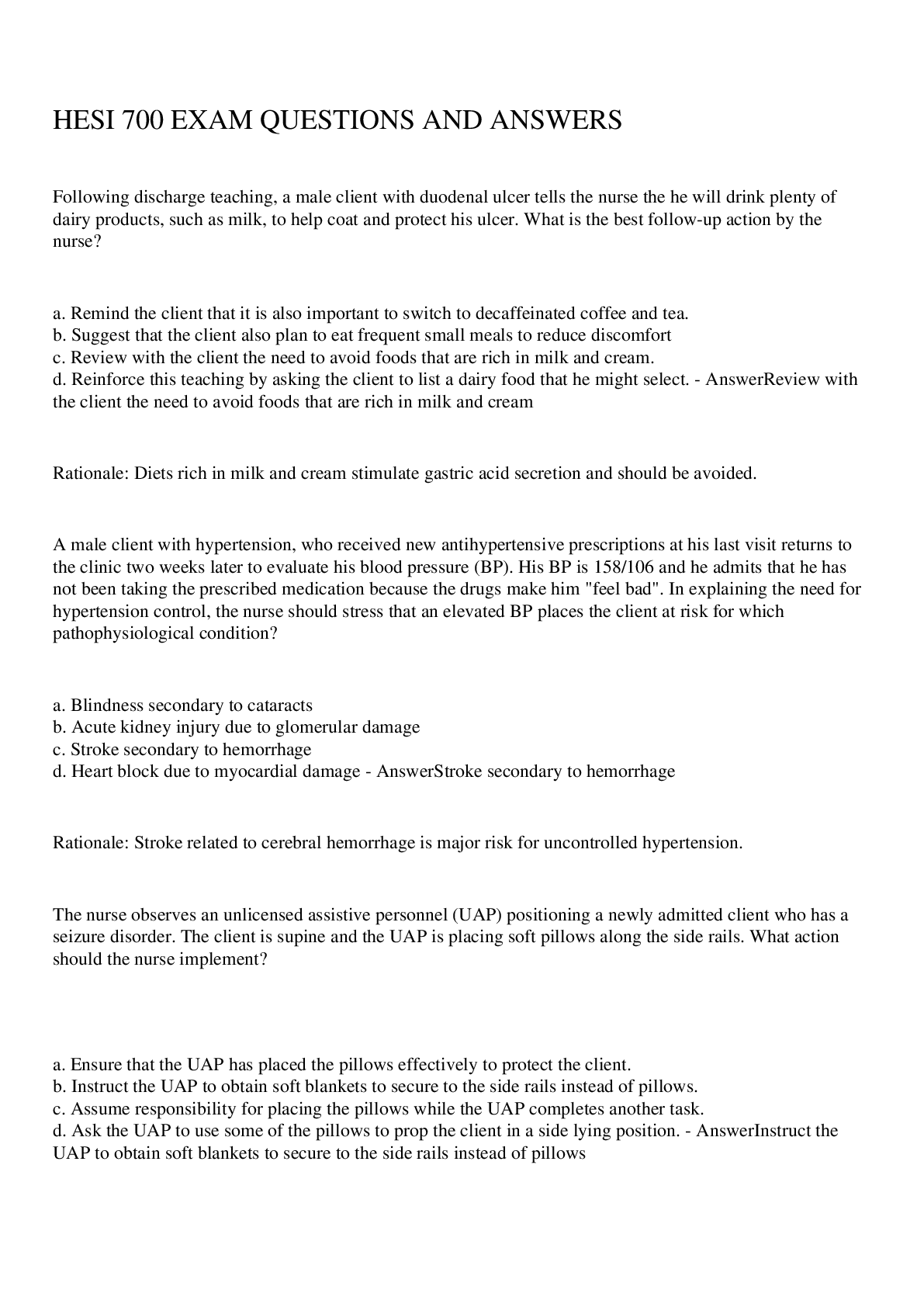

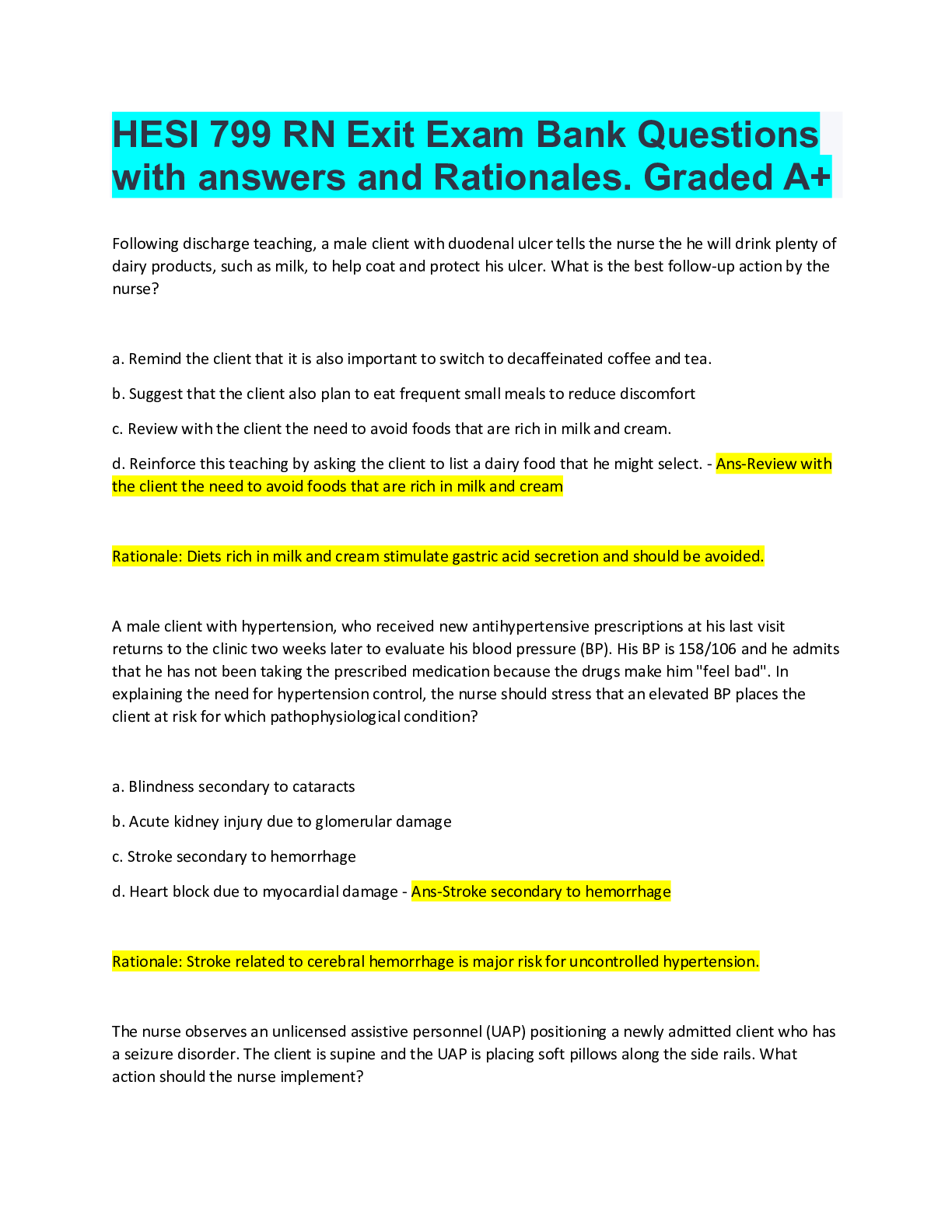


.png)
.png)
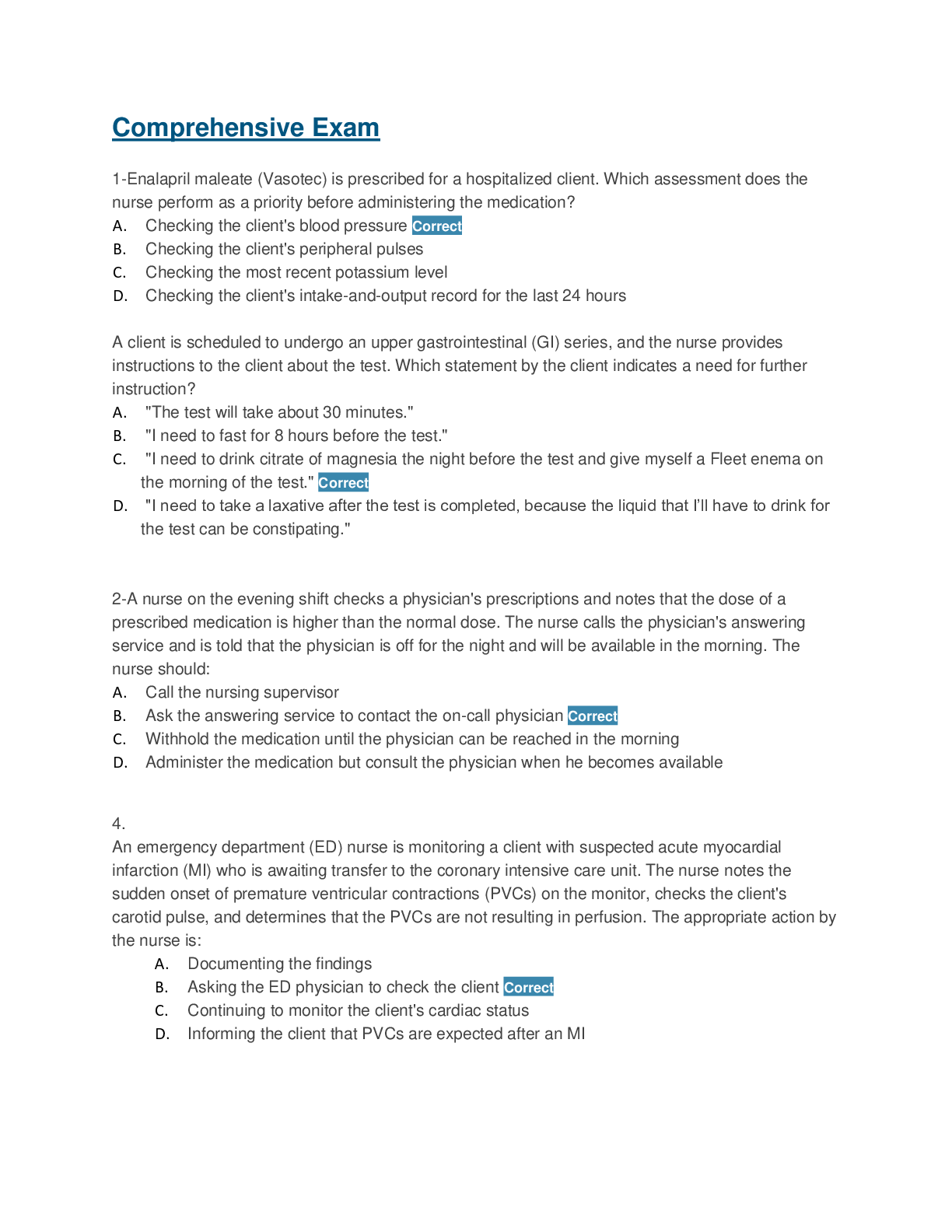



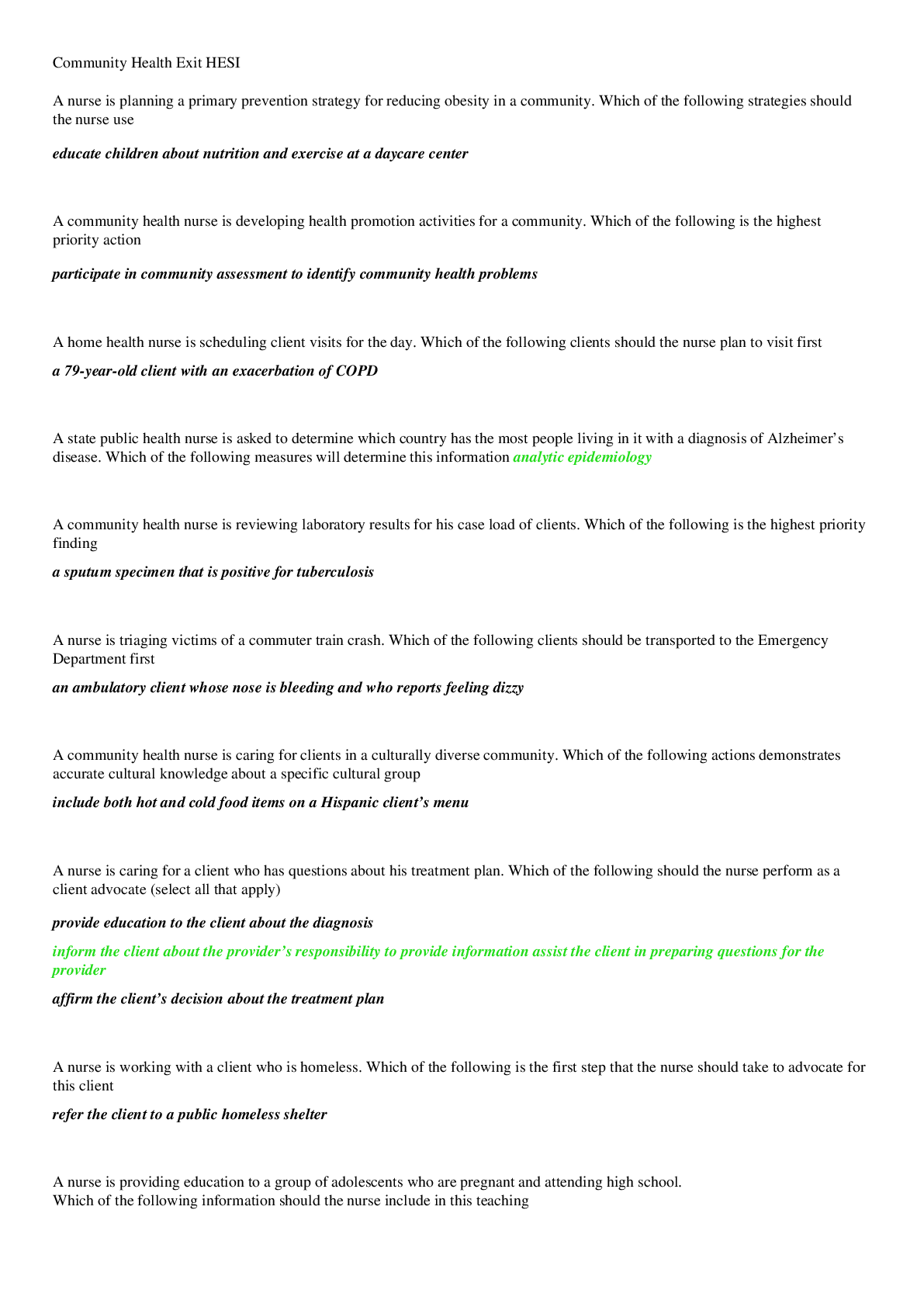
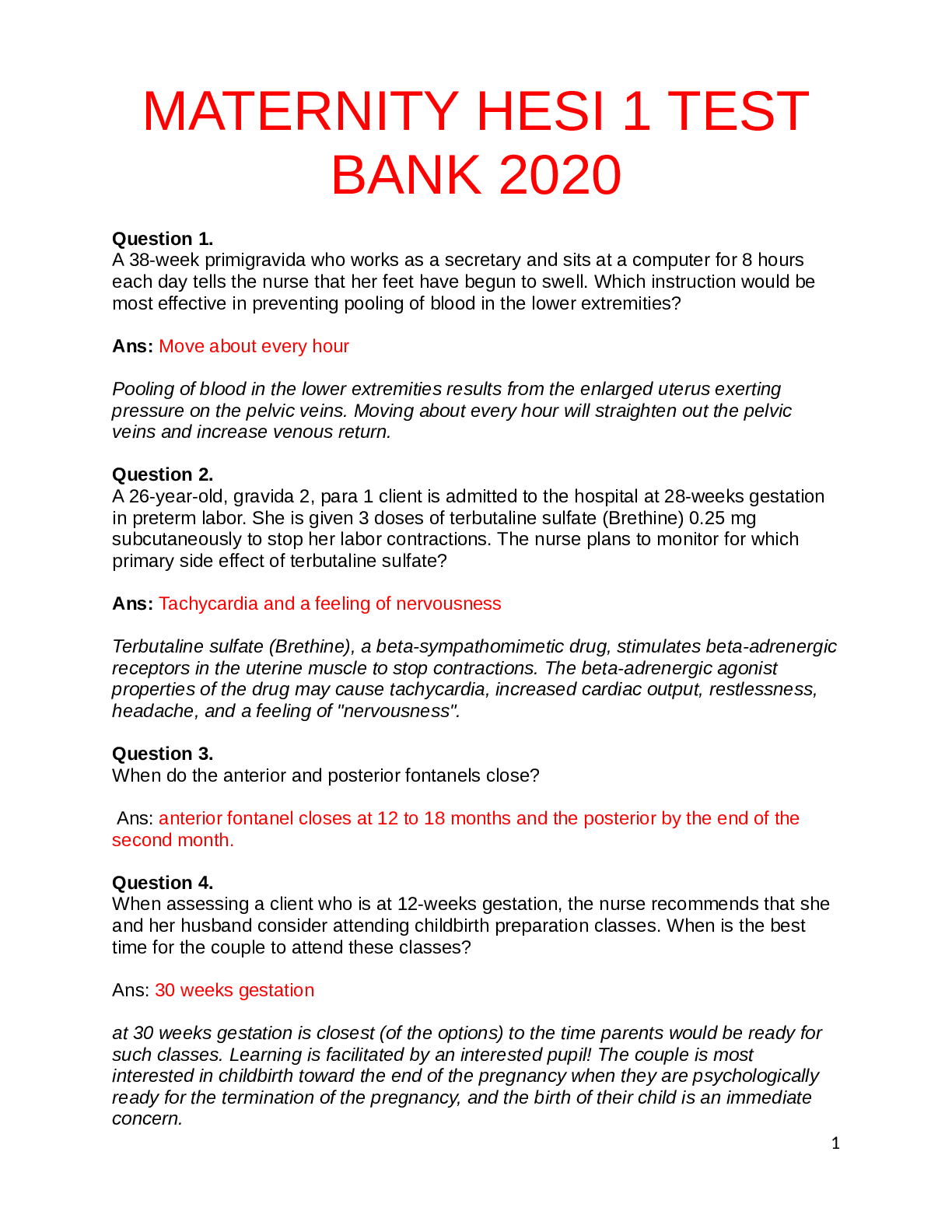
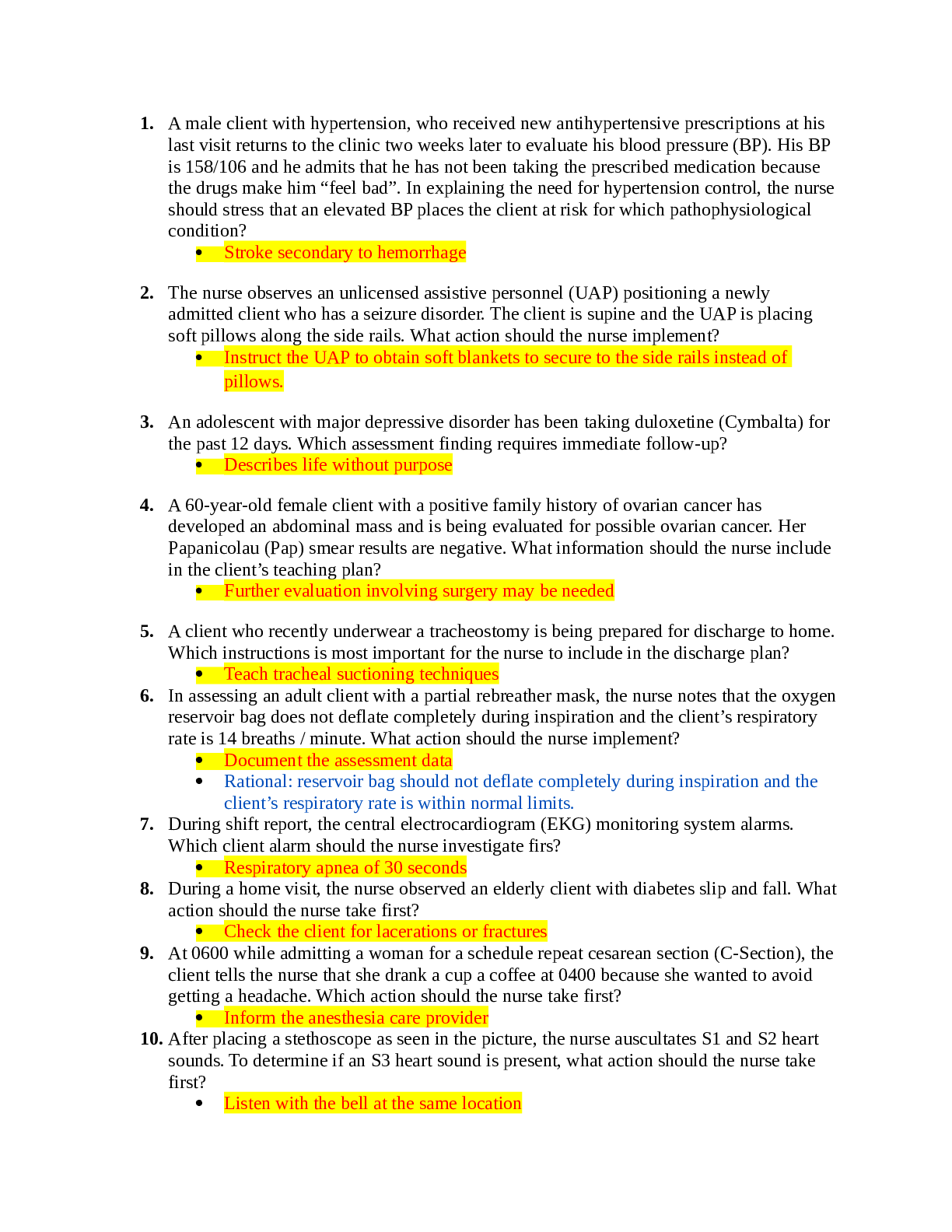
.png)
.png)
